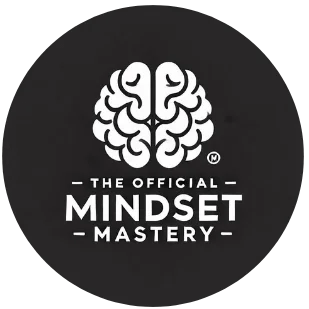In today’s fast-paced world, finding moments of calm and clarity can seem like an insurmountable challenge. However, incorporating brief mindfulness practices into your daily routine can significantly enhance your focus and reduce stress levels. As someone who has experienced the transformative power of mindfulness firsthand, I’m excited to share with you some effective 10-minute daily practices that can make a world of difference in your life.
Understanding mindfulness and its benefits
Mindfulness is the practice of being fully present and engaged in the current moment, without judgment. It’s a skill that can be cultivated through various techniques, particularly meditation. Research has shown that regular mindfulness practice can yield numerous benefits, including:
- Reduced stress and anxiety
- Improved focus and concentration
- Enhanced emotional regulation
- Better sleep quality
- Increased self-awareness
A groundbreaking study published in the Journal of Clinical Psychology in 2021 found that participants who engaged in just 10 minutes of daily mindfulness practice for eight weeks experienced a 25% reduction in stress levels and a 30% improvement in focus and attention span.
The beauty of mindfulness lies in its simplicity and accessibility. You don’t need any special equipment or extensive training to get started. All you need is a willingness to practice and a commitment to consistency. Even short daily sessions of 10-15 minutes can provide significant benefits, making it an ideal practice for busy professionals and parents alike.
Essential mindfulness techniques for daily practice
Incorporating mindfulness into your daily routine doesn’t have to be complicated. Here are some simple yet powerful techniques you can practice in just 10 minutes a day:
1. Breath awareness meditation
This fundamental meditation technique involves focusing your attention on your breath. Find a quiet, comfortable place to sit, set a timer for 10 minutes, and follow these steps:
- Close your eyes and take a few deep breaths to settle in.
- Focus your attention on the sensation of your breath entering and leaving your body.
- When your mind wanders (which is perfectly normal), gently bring your focus back to your breath.
- Continue this practice for the duration of your session.
Remember, the goal isn’t to stop your thoughts but to notice when your mind wanders and return your focus to your breath. This simple practice can significantly improve your ability to concentrate and stay present throughout the day. For more detailed guidance on breath awareness techniques, check out our essential mindful breathing techniques.
2. Body scan meditation
This practice involves systematically focusing your attention on different parts of your body, from your toes to the top of your head. It’s an excellent way to release tension and increase body awareness. Body scan meditation can be particularly helpful for those who struggle with physical manifestations of stress.
3. Walking meditation
For those who find it challenging to sit still, walking meditation can be a great alternative. This practice involves walking slowly and mindfully, paying attention to each step and the sensations in your body as you move. It’s a wonderful way to incorporate mindfulness into your daily activities, whether you’re taking a break at work or enjoying a stroll in nature.
Integrating mindfulness into your daily routine
Consistency is key when it comes to reaping the benefits of mindfulness. Here are some tips to help you establish a regular practice:
- Set a specific time each day for your mindfulness practice, such as first thing in the morning or during your lunch break.
- Start small – even 5 minutes a day is better than nothing.
- Use guided meditations or apps to support your practice, especially when you’re just starting out.
- Incorporate mindfulness into everyday activities, like washing dishes or waiting in line.
- Be kind to yourself – it’s normal for your mind to wander during meditation. The practice is in noticing and gently returning your focus.
As Thomas Harper, a renowned mindfulness expert, often says, “There’s no ‘right’ way to meditate. The key is to experiment and find what works best for you.” This advice has resonated with countless individuals on their mindfulness journey, including myself.
For a comprehensive guide on incorporating mindfulness into your daily life, visit our page on how to practice mindfulness daily.
Advanced mindfulness practices for stress reduction and focus enhancement
Once you’ve established a consistent basic practice, you might want to explore more advanced techniques to further reduce stress and enhance focus. Here are a couple of powerful practices to consider:
1. Loving-kindness meditation
This practice involves directing feelings of love, compassion, and goodwill towards yourself and others. It’s particularly effective for reducing negative emotions and fostering a sense of connection and well-being.
2. Mindful work techniques
Applying mindfulness principles to your work can significantly boost productivity and reduce work-related stress. This might involve taking regular mindful breaks, practicing focused attention during tasks, or implementing a mindful approach to prioritization and decision-making. For specific techniques tailored to remote work environments, explore our guide on mindfulness techniques for managing work-from-home stress.
Remember, the goal of mindfulness isn’t to eliminate all stress or achieve perfect focus. Rather, it’s about developing a more balanced, aware, and resilient approach to life’s challenges. By dedicating just 10 minutes a day to these practices, you can cultivate a greater sense of calm, clarity, and focus in your daily life.
| Practice | Time Required | Primary Benefits |
|---|---|---|
| Breath Awareness | 10 minutes | Improved focus, stress reduction |
| Body Scan | 10-15 minutes | Tension release, body awareness |
| Walking Meditation | 10-20 minutes | Mindful movement, stress relief |
| Loving-kindness | 10-15 minutes | Emotional well-being, compassion |
As you embark on your mindfulness journey, remember that consistency is more important than perfection. Start with small, manageable sessions and gradually increase the duration as you become more comfortable with the practice. For a variety of mindfulness meditation practices and easy techniques to reduce stress, visit our comprehensive guide.
By dedicating just 10 minutes a day to mindfulness, you’re investing in your mental health, focus, and overall well-being. As you continue to practice, you’ll likely find that the benefits extend far beyond those 10 minutes, positively impacting every aspect of your life. So why not start today? Your future, more focused, and less stressed self will thank you.





